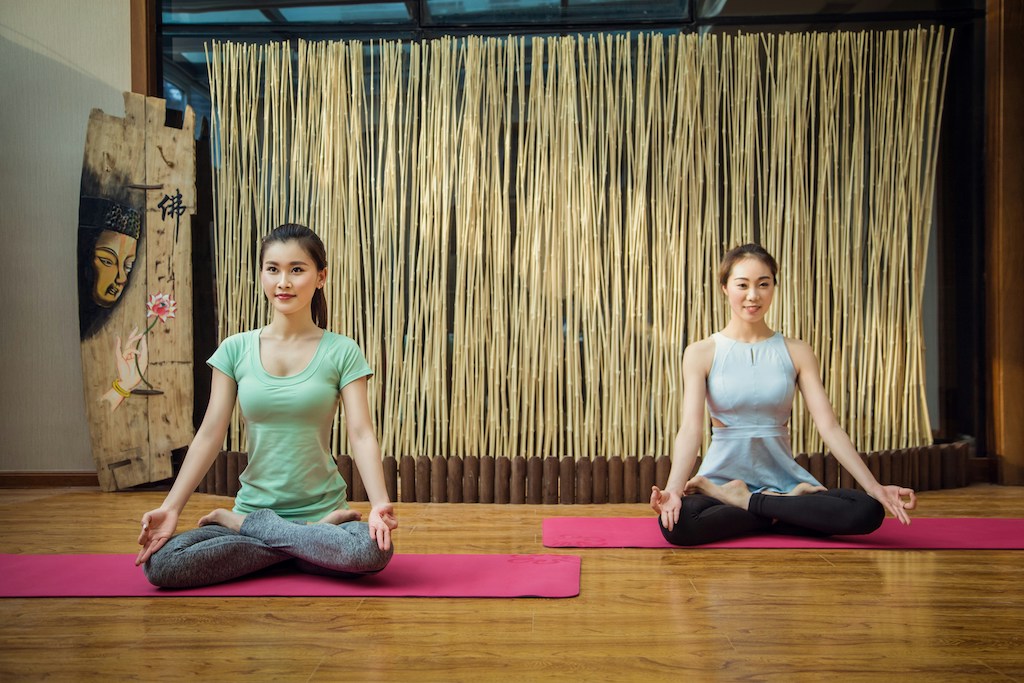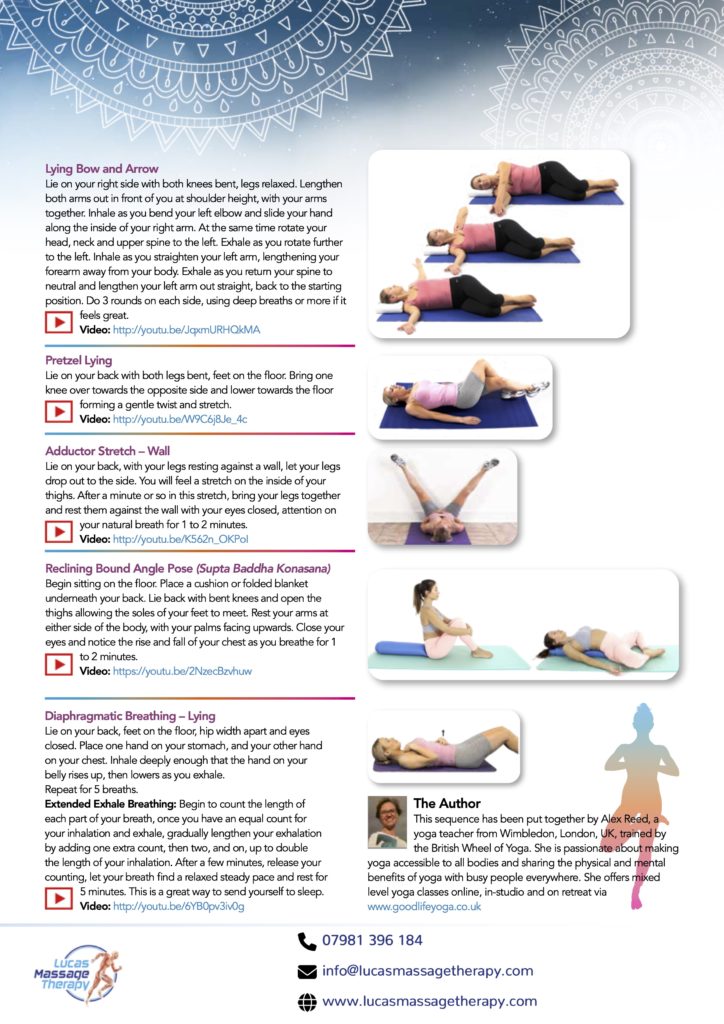16 Health Benefits of Yoga
The aims of yoga are to develop strength, mindfulness, and balance in both the mind and body. While there are over 100 various types, or schools, of yoga, most sessions typically incorporate breathing exercises, meditation, and performing postures (also known as asanas or poses) that stretch and flex different muscle groups. Some styles may be more vigorous and dynamic, while others prioritize relaxation and meditation.
It may be necessary to try multiple classes to determine your preferred style. Due to the multitude of yoga practices available, anyone can start practising, regardless of their fitness level or body size, as modifications for poses and beginner classes are offered in every style. The focus is on exploring your own limits rather than striving for perfection. Yoga provides a wonderful opportunity to connect with your body and inner self.
TYPES OF YOGA
You may prefer a certain type, depending on your goals and fitness level:
● Hatha yoga, the most popular form of yoga in the USA, is known for its emphasis on strength and purification of the body. It incorporates physical postures (asanas) and breathing techniques (pranayama).
● Lyengar yoga, on the other hand, focuses on alignment and is characterized by its fluid and dancelike nature. The use of props like wooden blocks, straps, chairs, bolsters, and blankets helps practitioners achieve and maintain challenging poses.
● Ashtanga yoga, also known as Ashtanga vinyasa or power yoga, is a dynamic and vigorous style. It is designed to enhance endurance and strength through a continuous flow of postures, linked with specific breathing patterns.
● Bikram yoga is a type of yoga that is practised in a heated room, which sets it apart from other forms. It consists of 26 postures that are repeated twice per session. The practice begins with standing and balance poses, followed by back bends, forward bends, and twisting postures.
● Restorative yoga, on the other hand, does not involve active poses. Its main focus is on relaxation.
● Kripalu yoga is a slower-paced and more gentle style of yoga. It falls between restorative yoga and the more intense forms.
● Benefits of yoga are various, such as improving fitness and helping with stress management. It can also enhance your ability to perform everyday tasks like lifting your child, controlling your dog, carrying groceries, or working in the garden. Additionally, it can aid in preventing or alleviating back pain, muscle or joint injuries, and headaches. Moreover, practising yoga promotes self-reliance and self-esteem.
The quieting of the mind is a significant advantage of practising yoga, surpassing its physical benefits of yoga. The key essence lies in cultivating attentiveness. Initially, focus is directed towards the body, eventually transitioning to the mind. As one progresses in their yoga journey, they begin to experience profound mental and spiritual advantages.
16 Health Benefits of Yoga
1. Enhance Flexibility and Mobility Yoga offers the advantage of being accessible to practitioners of all skill levels. Dedicate a few minutes each day to performing poses such as the Warrior or the Downward-Facing Dog, and you will quickly notice a tangible improvement in your flexibility, regardless of your initial level of flexibility.
2. When considering ways to enhance your fitness level, many individuals associate it with exerting themselves at the gym. However, weightlifting is not the sole method of exercise. Engaging in daily yoga sessions can effectively contribute to increasing muscle strength and flexibility. Well-known yoga poses like the plank, for instance, target various muscle groups such as the arms, legs, shoulders, and abdomen, simultaneously promoting their strengthening and toning.
3. Daily practice of yoga can enhance your posture, enabling you to maintain an upright position while walking and sitting at your desk. Incorrect body posture, which often leads to discomfort and ailments like back pain, can be relieved through regular yoga sessions. By enhancing strength, flexibility, and posture, yoga contributes to better balance and stability, reducing the chances of falls and injuries.
4. Yoga offers a complete fitness experience akin to a gym but in a serene and secure environment, focusing on overall well-being. It encompasses elements of cardiovascular exercise, functional training, and strength building. It provides the convenience of being able to go at your own speed, right in the comfort of your own residence.
5. Practicing gentle yoga every day aids in boosting the metabolism and facilitating fat burning, ultimately resulting in weight loss. Additionally, the daily benefits of yoga contribute to rebalancing the hormones in your body, which in turn promotes a healthier body weight. By reducing the levels of cortisol, the stress hormone, yoga helps to minimize overeating tendencies.
6. Cultivate Self-Awareness Daily benefits of yoga also strengthen the mind-body connection and help you deal more effectively with unpleasant emotions.

7. Yoga is a great way to boost your energy levels when you’re feeling depleted. By combining physical movement with controlled breathing, yoga helps to awaken your body’s energy centres, known as chakras. Incorporating daily yoga practice into your routine will provide the energy boost you need.
8. Regular yoga practice, even if it’s just a brief daily session, can effectively aid in stress management. Engaging in yoga regularly can lead to a decrease in heart rate, enabling the body to adapt to stress more flexibly. Furthermore, it enhances circulation and contributes to the reduction of blood pressure.
9. Enhance Your Sleep Quality. Incorporating a regular yoga routine into your daily life can be beneficial in combating insomnia. If you find yourself struggling with sleeplessness, consider engaging in relaxing yoga asanas or postures, such as uttanasana (forward fold) or assuming a supine position with your legs elevated against a wall. By combining restorative yoga poses with deep breathing techniques, you can effectively cultivate a state of tranquillity in both your physical and mental well-being, facilitating a more peaceful and rejuvenating sleep experience.
10. Breathing deeply and calmly is a vital aspect of yoga practice. Yogic breathing techniques, known as pranayama, aim to slow down the breath and encourage full inhalation from the stomach to the lungs. These methods promote relaxation, balance, and a confident, calm demeanour throughout the day. Additionally, they offer various benefits of yoga such as increased lung capacity and greater tidal volume, which refers to the maximum air intake capacity of the lungs. These techniques can be incorporated into daily life to maintain composure during emergencies, enhance clarity in stressful situations, and alleviate pain.
11. By reducing stress hormone levels and soothing the nervous system, yoga contributes to a decrease in chronic inflammation. This reduction in proinflammatory markers, such as cytokines, supports the immune system and promotes overall well-being.
12. Regularly practising yoga and meditation leads to increased serotonin levels, also known as the happy hormone, resulting in reduced depression and anxiety levels. In essence, dedicating just 15 minutes each day to yoga can initiate positive changes in your brain chemistry, elevating your mood and overall sense of satisfaction.
13. Embrace Greater Mindfulness Yoga and mindfulness are closely intertwined. During yoga practice, your attention will be directed towards the sensations, thoughts, and emotions that arise with each pose. This heightened awareness will anchor your mind in the present moment, aligning with the primary goal of mindfulness. Consequently, your mind will become content and focused. The practice of mindfulness yields enduring physical and psychological advantages that are closely aligned with the benefits of yoga. Notably, you will experience increased tranquillity and relaxation, reduced stress and anxiety, heightened energy and enthusiasm, as well as enhanced self-confidence and self-acceptance.
14. Engage in yoga and meditation to enhance concentration. By focusing on your breath during these practices, your mind becomes calm and you experience increased mental relaxation. This improved mental stability enables better retention and recollection of information. Devoting a few minutes to morning meditation can lead to enhanced concentration throughout the day.
15. By alleviating mental stress and relieving physical tension, our ability to recall information and maintain coherent thinking is enhanced. Clarity of mind and enhanced cognitive functioning are the direct outcomes of reducing mental stress and physical tension. Engaging in daily yoga cultivates a state of tranquillity and composure, enabling us to optimize our mental faculties. Ultimately, the practice of yoga facilitates sharper thinking and promotes more organized thought processes.
16. The regular practice of yoga has been linked to an extended lifespan by enhancing fitness levels, regulating heart rate, reducing stress, and promoting happiness. These factors collectively contribute to the potential for increased longevity.
Benefits of Yoga – Yoga exercises



Whether you need that revitalised feeling that comes with a good night’s sleep, or a new routine that builds in that all-important ‘me-time’, our free Lucas Massage Therapy wellbeing resource pack will get you started on the path to a happier, healthier you.
**These accessible guides are based on the latest science on wellbeing and are packed with practical tips on how to reduce stress, boost your mood and improve your health.**
Topics include:
– How to sleep better
– Benefits of Yoga
– Diet tips for wellbeing
– Mastering mindfulness
-A guide to alternative therapies
And much, much more

